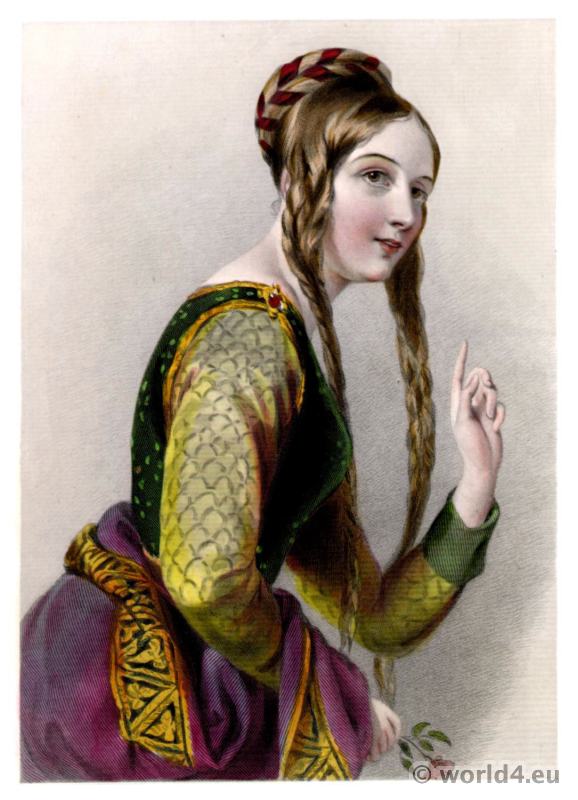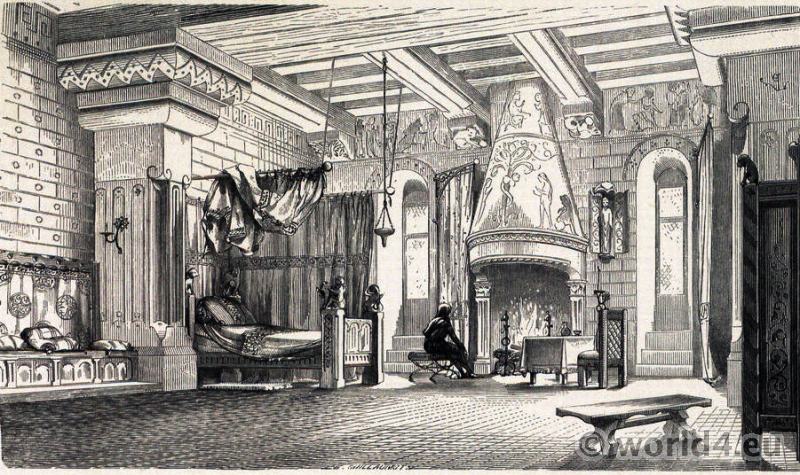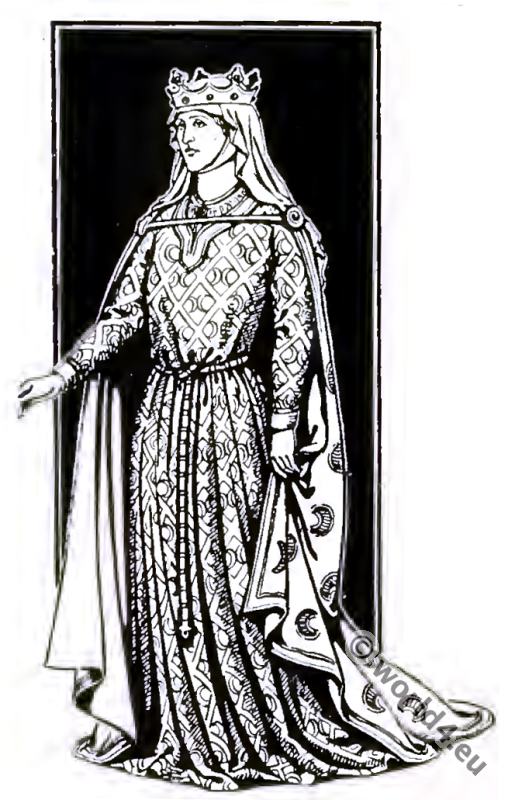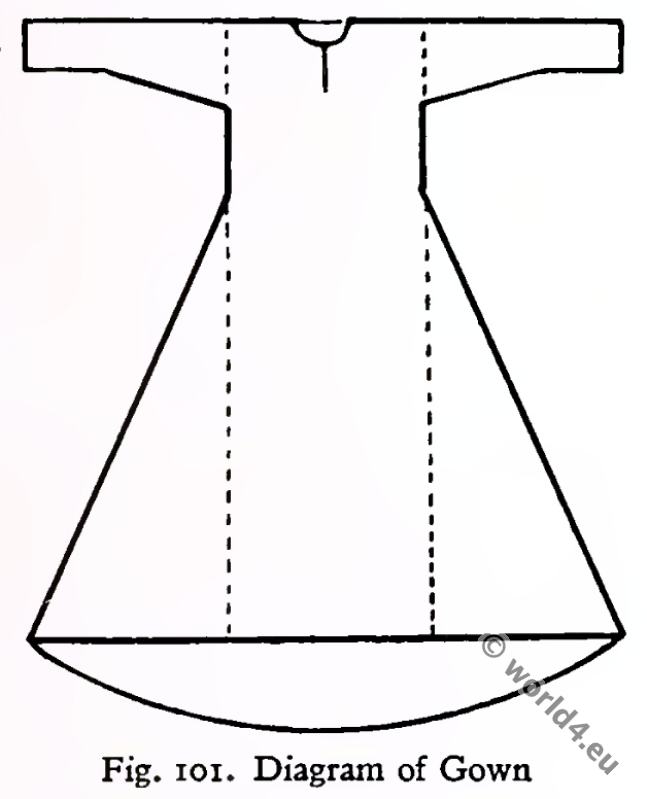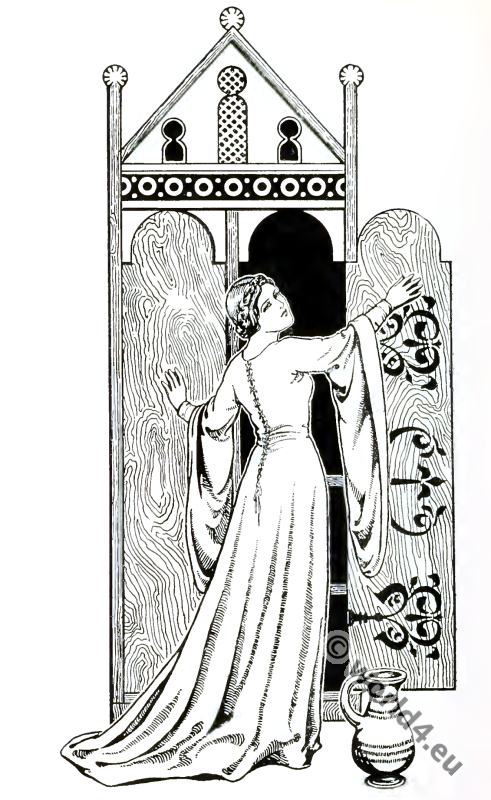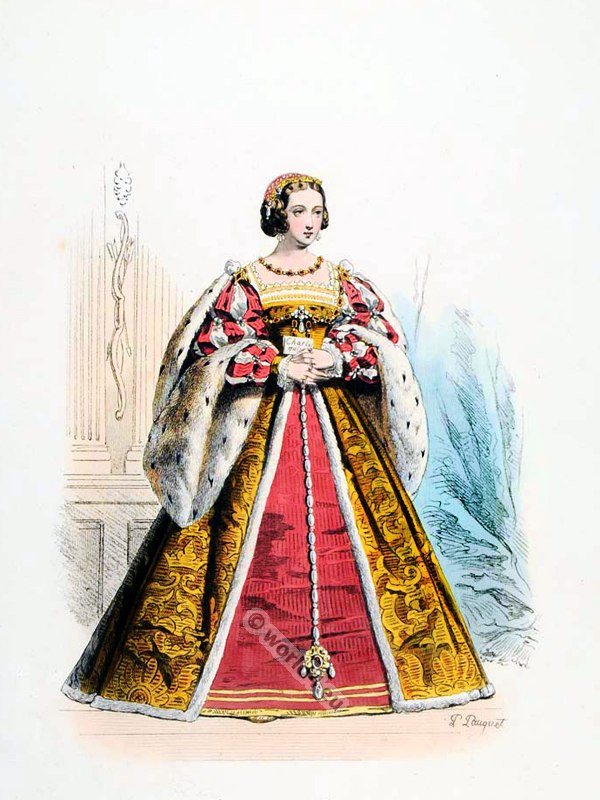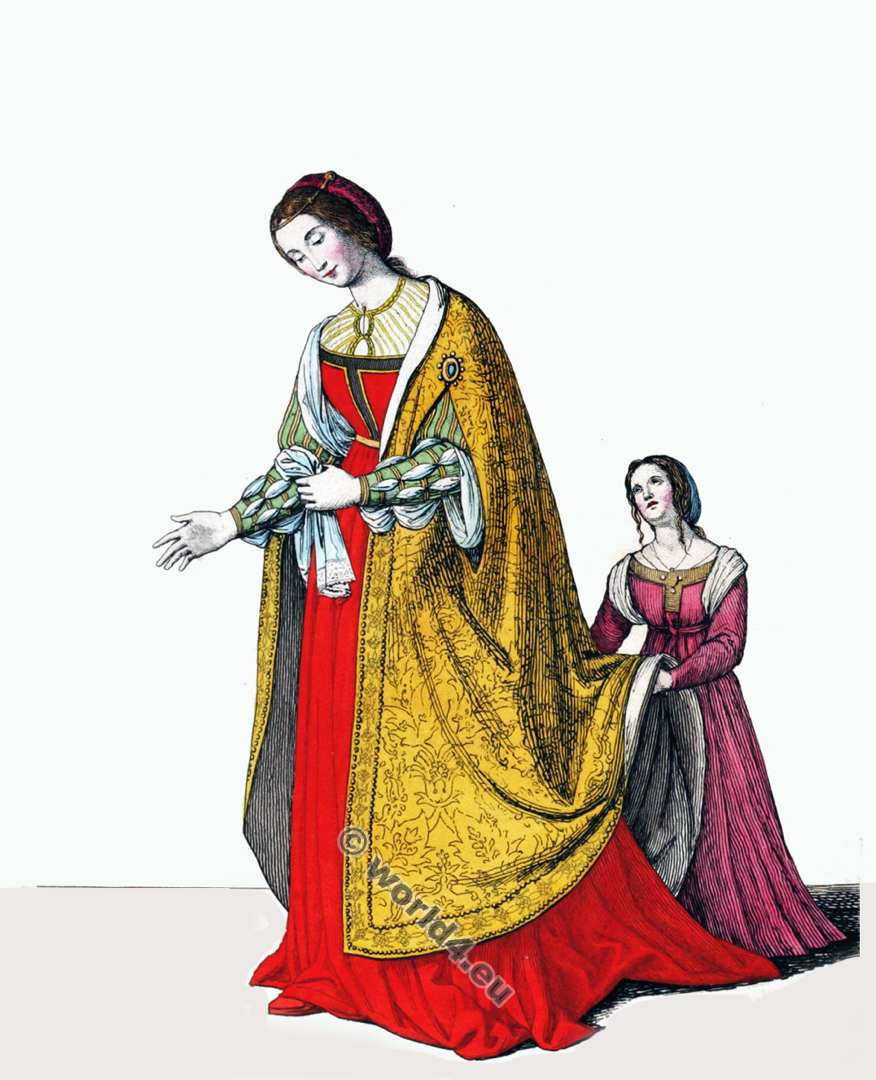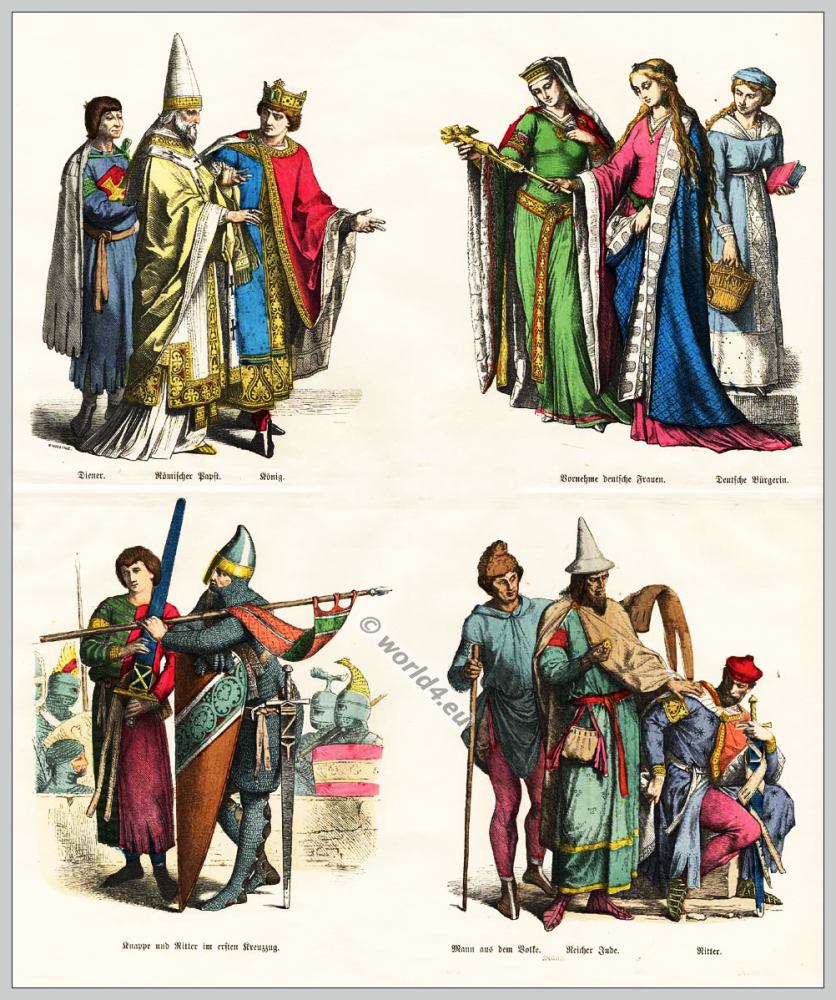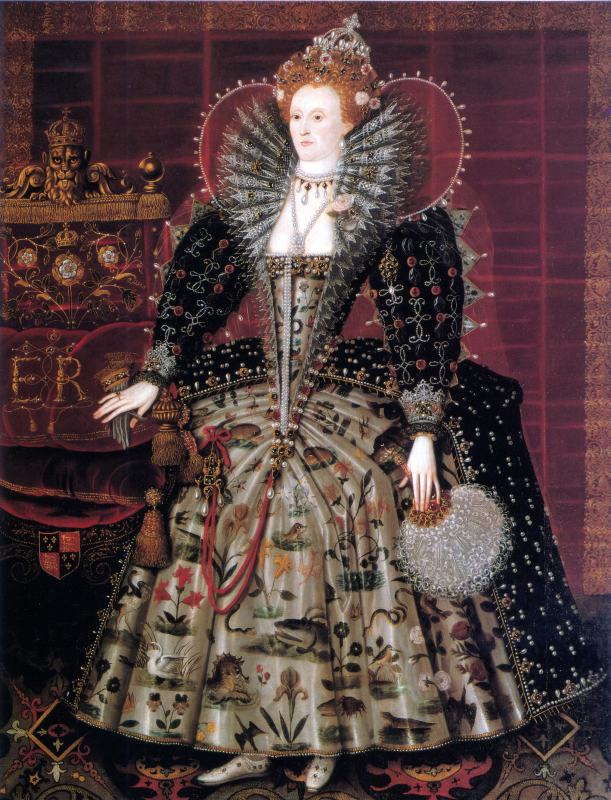Eleanor of Aquitaine of the House of Poitiers was Duchess of Aquitaine, first Queen of France (1137-1152) through marriage, then Queen of England (1154-1189) and one of the most influential women of the Middle Ages..
Eleanor of Aquitaine (French: Aliénor or Éléonore d’Aquitaine; also Éléonore de Guyenne; * 1122 in Poitiers in the Poitou; † 1 April 1204 in the monastery of Fontevrault in France), was the daughter and co-heiress of William X. (1099-1137), Count of Poitiers and fifth Duke of Aquitaine. She married in 1137 Louis VII., King of France. CHILDREN OF LOUIS VII.
1. Mary, married the Earl of Champagne. 2. Alice, married the Earl of Blois.
Eleanor married, secondly, Henry Plantagenet. CHILDREN OF HENRY II. AND ELEANOR
1. Henry, born 1155, crowned King of England as “Rex Filius,” 1170. Married Margaret, daughter of Louis VII. of France. d.s.p. 1183. 2. Richard, succeeded his father. 3. Geoffrey, Earl of Bretagne, 1158. Married Constance, daughter of Conan le Petit, Earl of Richmond and Duke of Brittany. Children: Eleanor, died 1241, and Arthur, born 1186, murdered 1203. Geoffrey was accidentally slain in a tournament in 1186. 4. John, succeeded his brother Richard. 5. Maud, married Henry V. the Lion, Duke of Saxony, ancestor of the House of Guelf. Died 1189. 6. Eleanor, married Alfonso VIII., King of Castile. Died 1214. 7. Joan, married, first, William II., King of Sicily, and secondly, Raymond, Count of Toulouse. Died 1195.
Eleanor’s early reputation was of a peculiarly complex and sometimes lurid character. With her the “artistic temperament” ran riot. We are told (Miss Strickland) that “Queen Eleanor as little regarded the married engagements of the persons on whom she bestowed her attention, as she did her own conjugal ties.”
Again, (Miss Maud M. Holbach.) “that luxurious lady of the South and heiress of the fair land of Provence — her love of a gay life and sumptuous attire went hand in hand with culture and refinement such as were unknown in England before she became its Queen.” By way of illustration, the following story deserves record: While Eleanor was Queen-Consort of France she created a great sensation throughout Christendom.
The preachings of S. Bernard (1091-1153; canonised 1174) at Vezelai, in Burgundy, advocating a Second Crusade (1146-1147), attracted huge audiences, including King Louis, the queen, and all the Court. So enthusiastic was the response of all present to the saint’s impassioned oratory, that to satisfy the urgent and immediate demand for crosses to sew upon their sleeves or breasts, he was constrained to tear up his own robes (He belonged to the Cistercian Order, whose robes consisted of a grey or white frock, and a black scapular with cowl. The crosses therefore would be white, grey or black.) to supply material.
The idea of becoming a female Crusader so appealed to Eleanor’s emotional temperament that she was completely carried away. Such an attractive, alluring experience would be wonderful! She also, as Duchess of Aquitaine and an independent sovereign, vowed to take the Cross. Eleanor and her fashionable ladies equipped themselves in all the paraphernalia of warriors of the period—in hauberk, heaum and chausses; and it is safe to surmise that they added to this masculine attire some touches of feminine fantasy! Mounted on spirited war horses they practised all kinds of military exercises, and diligently “trained” (in public!) to stimulate their feather-brained zeal and become fully accomplished soldiers of the Cross.
These self-deluded enthusiasts sent their abandoned distaffs to all their less martial friends, to knights, nobles and any “conscientious objectors” who had the good sense to refrain from participation in this disastrous, though possibly well-meant, wild-goose chase. At last Louis and his encumbrances set out, in the spring of 1147, and did the sights of Europe on the way.
Hundreds of baggage waggons drawn by oxen, and teams of pack-horses and mules were laden with the battalion’s accessories—pavilions of gold-embroidered silk, rich furniture and cushions, cutlery and table plate, to say nothing of innumerable coffers of gorgeous raiment, totally unsuitable for the expedition in hand, followed in the wake of the army, These and the pranks of a regiment of amateur amazons proved a serious impediment when they arrived in the Holy Land, and resulted in the utter failure of Louis’s undertaking.
It was owing to Eleanor’s disregard for the orders of the supreme command that the Saracens completely routed the king’s forces, and everything, including Eleanor’s magnificent baggage, and the greater part of the army, fell into the hands of the enemy. The queen, her ladies, and poor Louis, who found safety by climbing a tree, escaped only with their lives.
After this disaster the queen fled to Antioch, and, seeking the protection of her young handsome uncle, Raymond of Poitou, Prince of Antioch, she passed her time in pursuing her numerous amours with various princes, including her uncle, and a Saracen emir aged thirteen! Queen Eleanor returned eventually to Paris, where she first met Count Geoffrey of Anjou, who had come to Court to pay homage to his sovereign lord for the Duchy of Normandy.
Chroniclers delighted in scandal, even in those days, and they are responsible for the story that Eleanor lost her head over the handsome count, already, alas, a married man. Two years after, Count Geoffrey having departed this life in the meantime, his son, Henry Fitz-Empress, visited Paris to do similar homage, and immediately this royal coquette transferred her former infatuation for the father to the son—with a sportive alacrity never difficult to her. The king was annoyed; the prince obligingly retired to Anjou; and the queen made an application for a divorce, on the grounds of consanguinity — they were fourth cousins! Bishop Sugar made some opposition, but the marriage was dissolved. Six months afterwards Eleanor, aged thirty-three, married (1151) Henry Fitz-Empress Plantagenet, aged twenty-one.
As a young woman — she was Queen-Consort of France in her twenties — Eleanor dressed in all the fripperies devised or adopted by the exotic taste of the period. The very latest from the East found a place in the royal wardrobe, and high society followed suit. The elaborately gauffered bliaut, and its numerous accessories, were still in the height of fashion when Eleanor, then in her thirties, became Queen-Consort of England. Age, however, sobered the Provencal butterfly, and about the 1160’s, when she was approaching fifty—an age when all women should dress with propriety—she wore a costume which is chastity itself, compared with the elaborate toilettes of noble ladies of the last three decades.
Fig. 100 illustrates the type of costume now fashionable. The gown (Fig. 101) is no longer bound tightly round the figure, but hangs loose over the bust, is confined at the waist by a jewelled belt, and falls to the feet in graceful folds—a return to the mode of the late eleventh century. The gown in the effigy of Queen Eleanor at Fontevraud, from which this drawing is made, is white, covered with gold trellis-work and crescents, either embroidered or woven, and finished at the neck and wrist by bands of gold embroidery. The sleeves are close at the upper arm and tight at the wrist. The camise of chainsil or fine silk shows just above the neckband, and is fastened by a jewelled clasp. Over this is worn a semicircular mantle of blue silk, powdered with gold crescents, and lined with silk of a rose colour. It is attached across the shoulders by gold cords and jewelled plaques.
A rich crown is worn, over a small veil of coloured gauze or fine silk embroidered and edged with gold. Under the veil a piece of fine linen encircles the head, and passes under the chin — the “chin-strap,” known at the time as the BARBETTE.
Having set this mode of regal attire, Eleanor again misbehaved herself (in 1173), stirring up a mutiny against Henry by his sons. While canvassing for Prince Richard, in Poitou, she was captured, although disguised in male attire, and placed by Henry’s orders in close captivity. She remained a perambulatory State prisoner for the rest of Henry’s reign of sixteen years, moving from place to place, but being liberated temporarily only when he required her presence on ceremonial occasions.
Eleanor’s first imprisonment coincided with the death of Rosamund de Clifford at Godstow Nunnery. Gossips of the time linked the two events together, from which arose the story that the queen despatched her “Fair” rival by poisoned wine or a dagger. The fact is that Rosamund died a natural death, at the age of forty, leaving two sons, William Longespee and Geoffrey.
Fig. 102 shows a noble lady at her cupboard, attired richly, yet in a manner suitable to her duties as chatelaine of a baronial castle. The gown is similar in shape to those worn during the first years of Henry I.’s reign, and the drawing shows the method of lacing it tight round the waist, over the corse. The skirt part is cut in such a manner—with wide gores at the sides—that the folds begin at the level of the hips and fall to the feet in heavy lines in front, as well as behind where they form a train. The sleeves fit close on the upper arms, and are seamed to the shoulders. From the elbow downwards over the forearm, they widen out into long draped folds, finishing at the bottom in a rounded form, not in a point, as previously. Girdles might be worn with this type of gown, but there seems to have been no fixed rule. Some illustrations of this period show them, but others do not.
For ordinary wear this gown would be made of Flemish cloth, and in winter a mantle of cloth lined with fur would be added. The fashionable hairdressing would be worn, while, for out of doors, a cloke with a hood, worn over the veil, would be used. For full dress such a gown would be made of rich silk, and embroidered or woven as described under Fig. 100. The mantle, too, would be of silk, or even brocade.
Source: English costume by Diane Clayton Calthrop.
Continuing
Discover more from World4 Costume Culture History
Subscribe to get the latest posts sent to your email.


